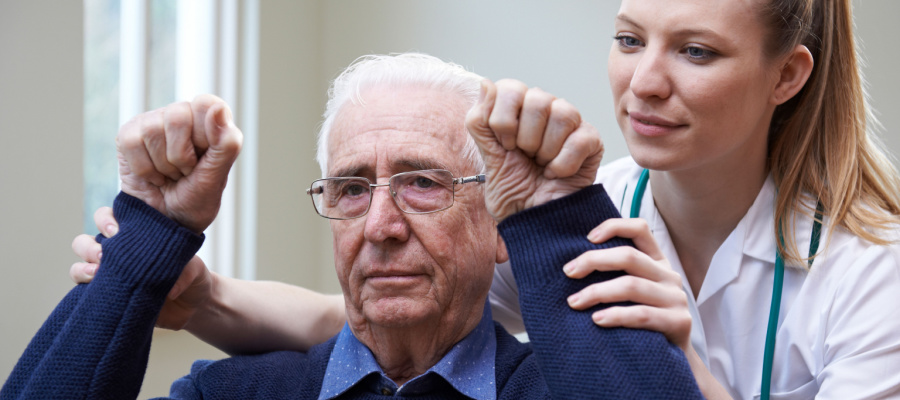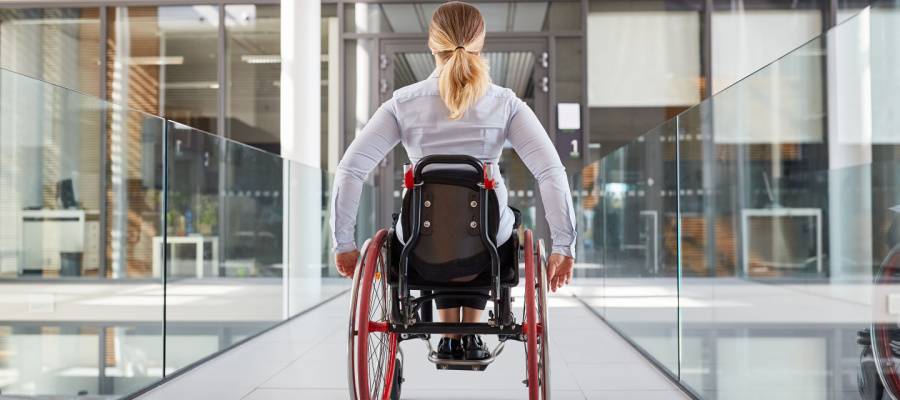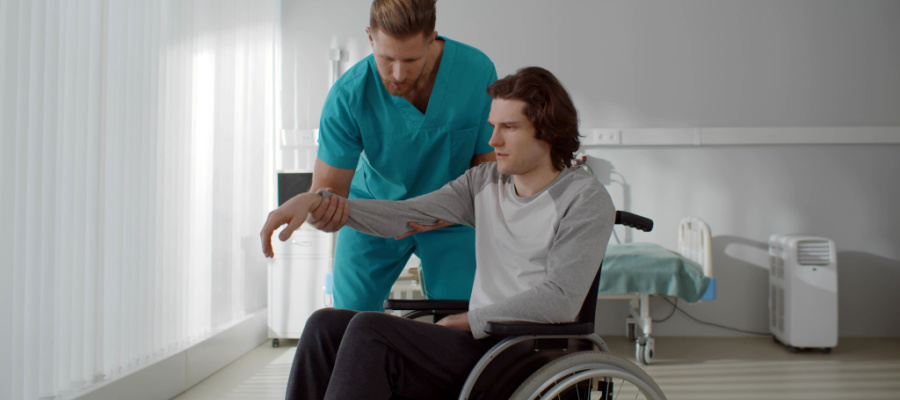What Happens to a Body Part When It Undergoes Paralysis?
Paralysis is a condition that can have significant impacts on both the body and the mind. It occurs when the communication between the brain and the affected part of the body is disrupted, typically due to injury, disease, or other health conditions. For those living with paralysis, understanding what happens to the body, especially to the paralyzed area, can provide insight into the challenges they face and the care they need.
At Devoted Helpers, based in Sugar Land, Texas, we are committed to offering compassionate, expert care to individuals experiencing paralysis, ensuring they receive the support they need. In this article, we will explore what happens to a body part when it undergoes paralysis, and how it can affect the body over time.
What Is Paralysis?
Paralysis is the loss of muscle function in part of the body. It can be caused by a variety of factors such as spinal cord injuries, strokes, multiple sclerosis, or neurological diseases like amyotrophic lateral sclerosis (ALS). Paralysis can be temporary or permanent, depending on the cause.
When a person is paralyzed, it means that the brain’s ability to send signals to the affected muscles is disrupted. As a result, the muscles cannot move, and the affected body part is unable to function normally.
Effects on Muscles and Tissue
One of the most significant consequences of paralysis is the impact it has on the muscles and soft tissues in the affected area. When muscles aren’t used due to paralysis, they begin to weaken and shrink over time, a process known as muscle atrophy.
- Muscle Atrophy – When muscles are not being actively engaged, they start to lose mass and strength. Over time, muscle tissue can deteriorate significantly, which can make rehabilitation or recovery more challenging.
- Joint Stiffness – Without movement, the joints may become stiff, making it harder to move the body part even if some muscle function is regained. This is called contracture, and it often leads to the shortening or tightening of muscles and tendons around the joints.
Nerve Damage and Recovery
In paralysis, nerves are either damaged or severed, disrupting communication between the brain and muscles. The extent of nerve damage can determine the severity of the paralysis and the likelihood of recovery.
- Partial Paralysis (Paraplegia/Monoplegia) – When the nerves are partially damaged, some nerve signals can still reach the muscles. This can result in limited movement or sensation, and in some cases, recovery of function is possible through therapy and rehabilitation.
- Complete Paralysis (Quadriplegia/Tetraplegia) – When the nerve connections are fully severed, no signals reach the muscles. This results in total loss of movement and sensation. Recovery is generally not possible in these cases, though new treatments and technologies may offer hope for improving quality of life.
Loss of Sensation
In addition to the loss of movement, paralysis can also result in the loss of sensation in the affected body part. This means that the person may no longer feel pain, temperature changes, or touch. The absence of sensation can present risks, as the person may not be able to feel injuries or infections developing in the paralyzed area.
- Risk of Injury – Without the ability to feel pain or discomfort, individuals with paralysis may unknowingly harm themselves. This could include burns from hot surfaces, cuts, or pressure sores (also known as bedsores) that develop due to prolonged pressure on the skin.
Circulation Issues
When a body part is paralyzed, circulation can also be affected. Muscles help pump blood back to the heart through contraction, but when those muscles aren’t moving, blood flow can slow down in the affected area. This can lead to a variety of problems, including…
- Poor Blood Circulation – This can result in swelling (edema), as blood and fluid pool in the lower extremities. Chronic swelling can lead to skin breakdown and increase the risk of developing deep vein thrombosis (DVT), which can be life-threatening if a clot moves to the lungs, heart, or brain.
- Pressure Sores – When the skin is under pressure for extended periods (such as when someone is sitting or lying in one position for too long), it can break down and form sores. These sores are more common in paralyzed individuals due to the lack of sensation and movement.
Skin and Tissue Health
As previously mentioned, paralysis can lead to poor circulation and skin breakdown, but it can also result in muscle spasms or spasticity, where the muscles become tight and stiff. This can lead to an increased risk of pressure ulcers, which develop when there is constant pressure on specific areas of the body, such as the back, buttocks, or feet.
In addition, the lack of mobility can contribute to poor hygiene and skin irritation in areas that cannot be easily cleaned or accessed.
The Impact on Daily Life
Living with paralysis not only affects the body but can have a profound emotional and psychological impact as well. Many individuals with paralysis experience feelings of loss of independence, anxiety, and depression. The inability to perform basic activities—such as walking, dressing, or eating—can create frustration and emotional challenges. This is why compassionate care from trained professionals is essential to provide physical, emotional, and psychological support.
Care and Rehabilitation for Paralysis
The road to managing paralysis involves ongoing care and rehabilitation. With proper medical attention and therapy, it is often possible to improve the quality of life for those with paralysis. Physical therapy can help prevent muscle atrophy, improve circulation, and increase flexibility. Occupational therapy can help individuals with paralysis regain some independence in daily activities.
For individuals with paralysis, assistive devices—such as wheelchairs, braces, and mobility aids—can help restore some level of functionality. Adaptive technologies, like voice-controlled devices, can also offer greater independence for those who experience paralysis.
At Devoted Helpers, we specialize in providing personalized home care services for individuals facing paralysis. Our team of experienced caregivers can assist with personal hygiene, mobility support, medication management, and companion care to ensure the comfort and well-being of your loved ones.


